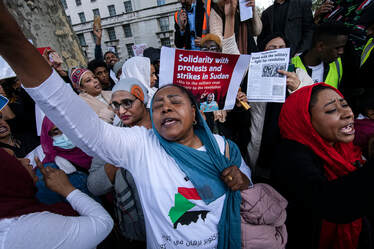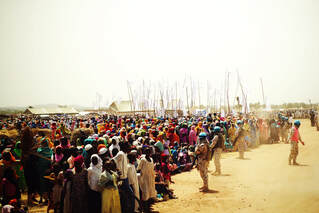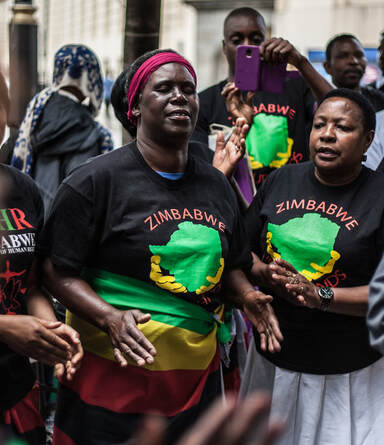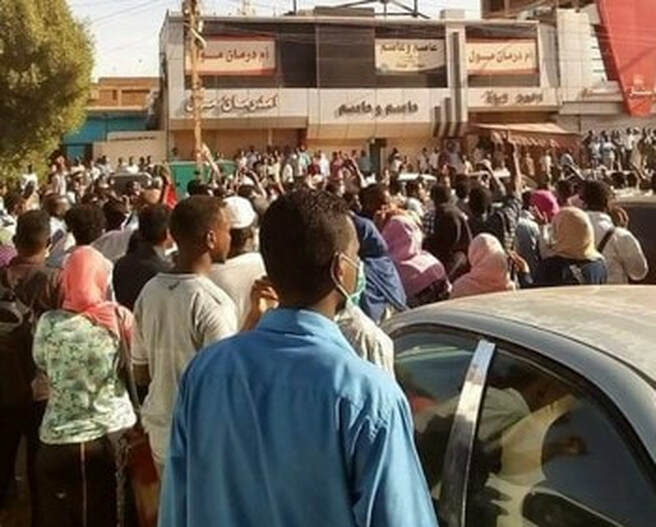|
Dr. Christopher Zambakari Founder & CEO, The Zambakari Advisory Hartley B. and Ruth B. Barker Endowed Rotary Peace Fellow Assistant Editor, Bulletin of The Sudan Studies Association  Credit: Koca Vehbi/Shutterstock Credit: Koca Vehbi/Shutterstock Sudan is a country in northeast Africa that has been marred by violence and conflict for several decades. The ongoing conflict in Sudan has resulted in countless deaths and displacement of millions of people. The conflict has also had a devastating impact on the country’s social and economic fabric, leaving the country in a state of turmoil. This article explores the social historical context of the conflict in Sudan, how it came to be, and what led to the violence. Also discussed is what the international community, United Nations, African Union, and Arab League can do to bring the violence to an end.
0 Comments
Nichola Mandil Ukeil South Sudan journalist, Instructor, Starford International University, South Sudan  Credit: For Her/Shutterstock Credit: For Her/Shutterstock Conflict in Sudan? You may wonder which conflict, which war, which collision of arms and general butchery it is that has most recently caught the international community’s attention. The latest test of wills is a war not a month old and commanded by generals. Commanded by generals, in fact, who have been comrades in “arms and fate” for nearly four years since former Sudanese President Omar El-Bashir was ousted in 2019. Rose Jaji (PhD) University of Zimbabwe, Harare, Zimbabwe  LONDON - JUNE 27TH, 2015: Unidentified woman at the "Zimvigil" protest outside the Zimbabwean Embassy protesting human rights violations by Robert Mugabe. Credit: Tom Brittney/ Shutterstock.com LONDON - JUNE 27TH, 2015: Unidentified woman at the "Zimvigil" protest outside the Zimbabwean Embassy protesting human rights violations by Robert Mugabe. Credit: Tom Brittney/ Shutterstock.com Women appear in much of the literature on violence as victims because violence is generally understood in terms that limit it to its direct or physical form, which is predominantly associated with men. The main result of masculinization of violence and its limitation to physical attack in the study of gender and violence is the pathologization of women, which obscures their political agency. Although women’s perpetration of direct violence is limited and largely unobtrusive relative to men in many conflict situations, women are conspicuous in perpetration of cultural violence, which Galtung (1990, 29) defines as “any aspect of culture that can be used to legitimize violence in its direct or structural form.” Cultural violence takes numerous forms that include art, science, ideology and language. Although it appears to be harmless, cultural violence justifies and legitimizes direct violence (Galtung 1990), and the two forms of violence are mutually constitutive. Cultural violence renders the idea of direct violence a palatable and appropriate response to perceived enemies identified through political ideology articulated through relevant language in Zimbabwean politics. The political discourse in Zimbabwe constitutes an integral component of cultural violence whose distinctive characteristics are name-calling and hate speech, which are exemplified by the depiction of political adversaries as puppets, traitors, and enemies who are a threat to the country and need to be “crushed.” Hashem Mekki Adjunct Language Professor at The Institute of World Politics Many politicians and ordinary citizens in the United States and other countries in the western hemisphere have been following the political turmoil and human rights violations against ordinary citizens in Venezuela. However, what many might not have heard of is that in Sudan, people have been oppressed and their civil liberties have been violated for half a century. The Republic of the Sudan, a country in Northeast Africa, where Islamic-oriented military regimes have dominated national politics since independence in the 1950s. Sudan is on the brink of a seismic political change as peaceful protesters march throughout its cities and the seat of power in the cosmopolitan capital Khartoum.
Kyle Anderson (MS), Data Analyst Research Aide, The Zambakari Advisory Richard Rivera (MA), Statistician & Psychometrician, The Zambakari Advisory Prior to its birth on July 9th, 2011, the area that is now South Sudan has faced instability, which can be seen as a result of its history of colonization that has, in turn, led to a legacy of instability and violence (Metelits, 2016). The current conflict in South Sudan can be thought of in terms of social, political, and economic factors. The Fragile States Index quantifies these factors, creating a composite score for each country. As of 2016, out of 178 countries that were studied, South Sudan was the second most fragile, only trailing Somalia (Fragile States Index, 2016).
This piece discusses two research questions investigating events within the five years following the birth of South Sudan: 1) What is the frequency and distribution of the interaction of actor type and event types for events in South Sudan from July 9th, 2011 to July 8th, 2016?, 2) What is the frequency and distribution of actor types within the different states in South Sudan from July 9th, 2011, to July 8th, 2016? |
Archives
October 2023
Categories
All
|
Copyright © 2023 The Zambakari Advisory - Privacy Policy
Our site uses cookies to improve your experience. You can control cookies by adjusting your browser or device settings.
If you continue without changing your settings, we assume that you are happy to receive all cookies.
If not, please feel free to opt out here.
SEO by Qasim Khilji
Our site uses cookies to improve your experience. You can control cookies by adjusting your browser or device settings.
If you continue without changing your settings, we assume that you are happy to receive all cookies.
If not, please feel free to opt out here.
SEO by Qasim Khilji

